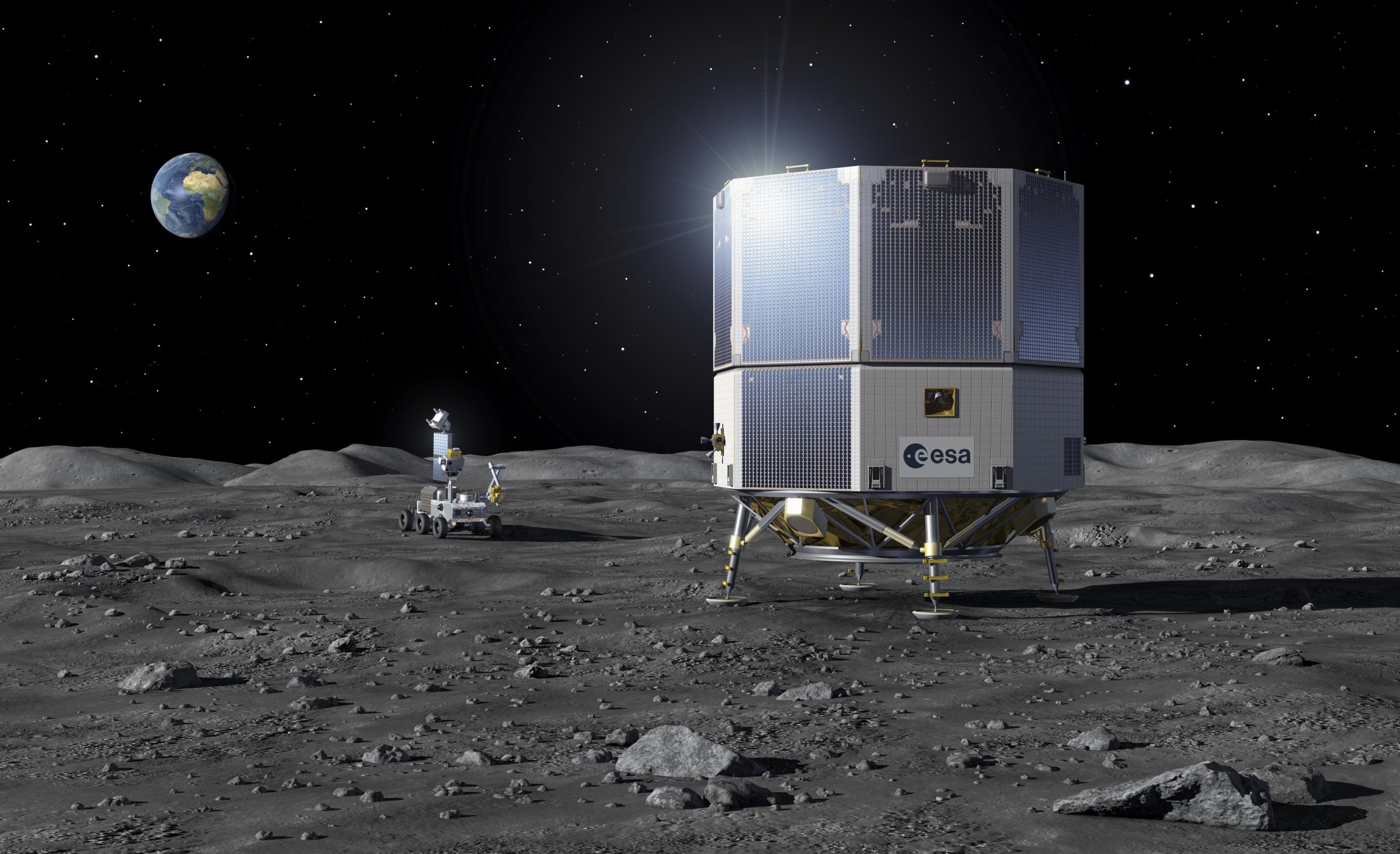
MILAN — The European Space Agency has tapped a consortium led by Thales Alenia Space Italy to develop its Argonaut lunar lander and has outlined a division of labor for the program across several European firms.
Thales Alenia Space Italy will act as the Lunar Design Element (LDE) prime contractor and ensure that all subsystems are coordinated and interoperable.
Thales Alenia Space France will design, develop and validate the Lunar Descent Element Data Handling Sub-System and procure its components, including two on-board computers.
Thales Alenia Space UK will develop the propulsion subsystem and procure propellant tanks and thrusters.
OHB System AG will provide the guidance, navigation and control (GNC) systems, the electrical power systems (EPS) and the telecommunications (TT&C) subsystem.
Nammo Space will design and procure the main engine.
The roles were announced during a press conference at the European Astronaut Centre (EAC) in Cologne, Germany.
Intended to place Europe on the moon for the first time, Argonaut was initially proposed and received its first round of funding at the 2022 ESA Ministerial Council in Paris. The spacecraft consists of three main elements: the LDE, the Cargo Platform Element and the payload. The LDE is the landing module and is responsible for transporting and delivering the payloads to the lunar surface.
The schedule is tight. Initially planned for 2031, the qualification module is now expected between 2028 and 2029 and Mission 1 is planned to launch on a four-booster Ariane 64 by the end of 2030, followed by a second mission in 2033. ESA will present the proposal for Mission 1 to member states at the upcoming Ministerial Council that will be held in Bremen on the 26-27 of November. ESA is requesting 600 million euros ($692 million) for the project, Daniel Neuenschwander, ESA’s Director of Human and Robotic Exploration, said at the press conference.
“We see this as just the beginning,” Neuenschwander said. “At every Ministerial, we hope to have one Argonaut Mission sponsored. But the mission is a truck, what needs to be decided is what do you want to transport as per payloads.”
At present, there are no confirmed candidate payloads for Argonaut. ESA plans to initiate the first mission carrying payloads focused on surface mobility, robotics, navigation and time/precision technologies an ESA spokesperson told <em>SpaceNews. The final selection — likely influencing mission duration — will be debated next week at the Bremen Ministerial.
Aligned with the Lunar Exploration Roadmap, ESA plans to initiate the first Argonaut mission carrying payloads focused on surface mobility, robotics, navigation, and time/precision technologies (such as NovaMoon). The final selection of these payloads will be made in coordination with Member States after the Ministerial, taking into account technical feasibility and schedule considerations
As with most inaugural lunar missions, the primary objective is landing. “Touch down is the first step: demonstrating it can land safely,” Neuenschwander noted.
To avoid the fate of other recent lunar landings that experienced stability issues such as ispace or Intuitive Machine’s Odysseus, ESA and Thales Alenia Space emphasized the focus on lander stability.
“Our program is characterized by an extensive and comprehensive chain of verification tests, “that allow us to increase the reliability of the mission itself,” said Roberto Angelini, head of the domain exploration and science at Thales Alenia Space Italy. The target is a south-polar landing with an accuracy of 250 meters, though landing sites and mission duration will vary across missions and payloads.
Because Argonaut requires a 10-ton launch mass and aims to deliver 1,500 kilograms to the lunar surface, ESA is working with Arianespace to expand the Ariane 64 rocket’s performance envelope. “Arianespace is investigating which kind of improvement and mission parameters they have to introduce to improve the upper stage and allow this to happen,” said Sara Pastor, ESA’s lunar projects group leader.
Although aligned with the Artemis architecture, ESA highlighted how the first mission will proceed regardless of Artemis program decisions. “Argonaut is linked with Artemis architecture but Mission 1 will go ahead independently. Argonaut is for European ambition to go to the moon.” Neuenschwander said.
